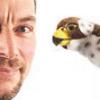In recent years, drone technologies have been explored for a range of applications in conservation including (but not limited to) mapping, biodiversity inventories, antipoaching patrols, wildlife tracking, and fire monitoring. The rise of customizable, open-source drones like those of ArduPilot and OpenROV hold promise for more effective conservation applications, and combined with other monitoring sensors and devices, they are capable of collecting high-resolution data quickly, noninvasively, and at relatively low cost.
However, challenges remain in putting these tools to use. A recent paper reviewing 256 conservation drone projects highlighted some of these major obstacles, ranging from unintended social and ecological consequences of drone operations to still prohibitive costs, both in terms of hardware and in terms of storing and processing large volumes of data. The longstanding challenge of power/battery life remains as well.
If you're considering trying out drones for yourself, and want to explore the possibilities and understand the major conversations happening around this technology, check out these beginner's resources and conversations from across the WILDLABS platform:
Three Resources for Beginners:
- Conservation Technology User Guidelines Issue 5: Drones, World Wildlife Fund | Drones, best practices, ethics, regulations, case studies
- WILDLABS Virtual Meetup Recording: Drones, Craig Elder, Dr. Claire Burke, and Gabriel Levin | Drones, thermal camera, wildlife crime, ML, biologging
- New Paper: Drones and Bornean Orangutan Distribution, Sol Milne | Drones, data analysis, citizen science, community science, primates
Three Forum Threads for Beginners:
- Curious about radio-tracking with drones? | Wildlife Drones, Biologging (5 replies)
- Drones for GIS Best practice Document | Adrian Hughes, Drones (10 replies)
- WWF Conservation Technology Series: Drones in Conservation | Aurélie Shapiro, Drones (7 replies)
Three Tutorials for Beginners:
- How do I use a drone to capture radio-tracking data? | Debbie Saunders, Tech Tutors
- How do I choose the right drone for my conservation goals? | Shashank Srinivasan, Tech Tutors
- How do I strategically allocate drones for conservation? | Elizabeth Bondi, Tech Tutors
Want to know more about using drones, and learn from experts in the WILDLABS community? Make sure you join the conversation in our Drones group!
*Header photo: Parker Levinson, Point Blue Conservation Science
My research focuses on using Next-Generation Sequencing (NGS) to study endangered species, including carnivores, chiropterans (bats), and lizards, as well as their microbiomes.
- 1 Resources
- 3 Discussions
- 20 Groups
- @faishal
- | He
I have been an aerial dugong surveyor since 2014, with a background in Fisheries and Marine Science, specializing in Fisheries Resource Management, and experience in underwater ecological data collection and developing remote sensing technology for marine ecosystem monitoring.
- 0 Resources
- 0 Discussions
- 1 Groups
"As co-founder of IMPACT Madagascar and a geologist with extensive experience in GIS, I believe technology plays an important role in both environmental conservation and sustainable community development."
- 0 Resources
- 0 Discussions
- 3 Groups
A chemist by training and enthusiast about the environment by nature. Currently finishing my PhD where I was lucky to merge several of my passions such as programming, data analysis, aquatic ecology and analytical chemistry.
- 0 Resources
- 0 Discussions
- 7 Groups
- @Eldogk7
- | He/Him
Hardware engineer with 10+ years in IoT & drones, and 4 years in AI, dedicated to sustainability. Developed the world’s first AI soil nutrition sensor & a mine-detecting drone for the Indian Army. As Abhram’s Founder & CEO, I innovate with smart soil sensors & IoT weather station
- 0 Resources
- 1 Discussions
- 4 Groups
- @machadoams
- | He/Him
Universidade Federal de Santa Catarina (UFSC)
I am a behavioural ecologist interested in the role of individual variation in ecological interactions and in human-wildlife dimensions
- 0 Resources
- 0 Discussions
- 9 Groups
- @iagosilvestre
- | he/him
Universidade Federal de Santa Catarina (UFSC)
I'm a Ph.D. Student in Automation and System Engineering Program from the Federal University of Santa Catarina-Brazil. My main research interests are Multiagent Systems and Embedded Systems.

- 0 Resources
- 1 Discussions
- 4 Groups
- @valengsb
- | she / her
GIS specialist for Audubon Americas | Biologist with an emphasis on Conservation and Sustainable Development | Innovative approaches in the study and monitoring of biodiversity for possible, biodiverse, and just futures.
- 0 Resources
- 0 Discussions
- 18 Groups
Michigan State University
Conservation Criminologist
- 0 Resources
- 2 Discussions
- 7 Groups
- @capreolus
- | he/him
Capreolus e.U.
wildlife biologist with capreolus.at





- 1 Resources
- 78 Discussions
- 16 Groups
- @JakobWiren
- | He,him
Swedish soon-to-be graduate engineer in AI/ML and robotics. Writing my master thesis in using decision trees for anti-poaching in Limpopo, South Africa. Am passionate about conservation, AI and travelling. Help me find a way to help you!
- 0 Resources
- 1 Discussions
- 13 Groups
- @Margaret
- | Her/she
- 0 Resources
- 1 Discussions
- 8 Groups
How can drones and ATVs protect black-footed ferrets from the plague? In this case study from WWF's Northern Great Plains Program, Black-footed Ferret Restoration Manager Kristy Bly discusses how delivering vaccines to...
17 February 2021
Sol Milne's new paper, Drivers of Bornean Orangutan Distribution across a Multiple-Use Tropical Landscape, is now available. Using drones to detect orangutan nest density in aerial surveys (as shared during our...
12 February 2021
A research mission to determine the impact of the giant A-68a iceberg on one of the world’s most important ecosystems using underwater robotic gliders gets underway this January. A team of scientists, led by British...
13 January 2021
The latest issue of WWF's Conservation Technology Series is about drones and is designed for a broad audience of conservationists. Containing ten case studies, scientific literature, and handy information on getting...
18 November 2020
As drone usage continues to grow within the conservation tech community, driven by improved performance, increased accessibility, and the wide range of data collection methods that can be served by drones, so do the...
19 October 2020
The miniaturisation of technology is rapidly opening up new possibilities for conservationists and environmental scientists in need of less invasive, easy to deploy solutions. University of Washington researchers have...
13 October 2020
Today, Sustainable Fishing Challenges group leader Daniel Steadman discusses how fishing gear itself could benefit from fresh technological innovations to prevent both environmental damage and damage to species and...
19 August 2020
In this case study from herpetologist Emily Taylor, we learn about the best methods and gear used to track snakes, lizards, and other reptiles and amphibians via radio-telemetry, and how these techniques have changed...
31 July 2020
What is it like to track endangered species using drones? In this blog post from Wildlife Drones, Dr. Debbie Saunders travels to New Zealand to track the Kākāpō, an extemely rare and elusive bird of which approximately...
8 July 2020
The Monterey Bay Aquarium Research Institute's MARS ocean observatory may someday make conducting deep-sea research more accessible and affordable thanks to Deep-Sea Connect, their new wireless system engineered to ...
31 March 2020
Community Announcement
Our second WILDLABS Community Call took place on April 1st to continue the discussion started by Ben Tregenna in our Data Science group, in which he suggested the idea of submitting a collaborative entry to the X-Prize...
30 March 2020
2020 marked our fifth year holding our annual #Tech4Wildlife Photo Challenge, and our community made it a milestone to remember. Conservationists took to Twitter last week to share their best high-tech snapshots from...
4 March 2020
September 2024
event
33 Products
Recently updated products
| Description | Activity | Replies | Groups | Updated |
|---|---|---|---|---|
| https://news.mongabay.com/2019/01/drones-and-thermal-cameras-help-detect-cryptic-species/ |
|
Drones | 6 years 4 months ago | |
| If you need a piece of exposed (black) film then please get in touch. I still take "real" slides and have a few black frames at start and end of each roll of film.... |
|
Drones | 6 years 6 months ago | |
| We are starting a new drones project at the RSPB to looks at multispectral cameras. I would love to hear about any experience people... |
|
Drones | 6 years 7 months ago | |
| Hi Michael! Thanks so much for following up. I have yet to really get my feet wet with drones & algal blooms (my water quality issue of interest at the moment), but... |
|
Drones | 6 years 11 months ago | |
| hi Stephen, Kites have gimbals too (ranging from simple strings to metal rigs) and you can connect to a camera much like a drone. In my case I have a gimbal... |
|
Drones | 7 years ago | |
| Hi Chris, Your project sounds interesting! How's it coming along? I'm based in the SF Bay Area. I don't have much drone experience, but it's something... |
|
Drones | 7 years 5 months ago | |
| Hi, I would like to share this article with good social reflections about drones and mapping: https://forestcompass.org/drones-pros-... |
|
Drones | 7 years 5 months ago | |
| Excellent - started reading this yesterday. This is a very timely and pertinent paper. Thanks for sharing. |
|
Drones | 7 years 8 months ago | |
| Hi Mazidi, all the systems that I recommended are separate systems with their own GPS, not connected to the drone. Just the last one was the only finished product. Good luck... |
|
Drones | 7 years 8 months ago | |
| The European Space Agency have an exciting funding opportunity coming up and got in touch with us to ask that we share it with you,... |
|
Drones | 7 years 10 months ago | |
| For those who couldn't make it to the webinar, there's a recording at https://drive.google.com/file/d/0B0smOWFNRzuoLXpPSWREUnE2YzA/view. What do people think? Is this the... |
|
Drones | 7 years 10 months ago | |
| People in this thread might be interested in this special issue of remote sensing in ecology and conservation, looking for papers on "New Approaches to Citizen Science... |
+22
|
Drones | 7 years 10 months ago |
Become a Scientist Pilot!
12 August 2022 5:20pm
Research Technician - Unoccupied Aircraft Systems Pilot and Geospatial Analyst
10 August 2022 10:40pm
3yr Postdoctoral Associate: Remote Sensing and Unoccupied Aircraft Systems
10 August 2022 5:29pm
Protecting endangered megafauna through AI analysis of drone images in a low-connectivity setting: a case study from Namibia
9 August 2022 5:08pm
The Foes and Floes of Labelling Aerial Pictures Manually
13 July 2022 12:43am
A Triphibian Surveillance Vehicle
9 July 2022 2:23pm
New Conservation Tech Directory update
27 June 2022 4:45pm
Cofounder needed
9 June 2022 4:23pm
17 June 2022 6:54pm
How exciting @Joyeeta ! I'd love to learn more about the companies and projects you worked on, can you share more info about them?
I once chatted to an entrepreneurial advisor with a couple of my conservation tech ideas, and he said my ideas are good/impactful but don't make for a product worth millions of $$$ of turnover per year that would interest investors. So I am very curious about how you got your conservation tech businesses off the ground!
18 June 2022 8:33pm
Some folks doing work in this space - Wildlife Drones, Conservation Drones, UAV Wild, AfricanDrones, Oceans Unmanned, Geonadir.
Airships for Wildlife Management and Research
9 December 2021 7:13am
15 January 2022 6:23am
Sure! Let's chat.
15 January 2022 6:24am
Our Aircraft is certified in South Africa. And we are working with multiple Civil Aviation Authorities around the world to get flight approvals. We are open to discussing the projects in the meantime.
7 June 2022 1:04pm
Hi
I can help...I think I have a few ideas where this can work.
Thanks
Smithsonian Magazine: "Underwater Roombas" scan southern California coast for DDT barrels
4 June 2022 7:30pm
New article (Reuters): Orca stuck in river to be lured to sea using drone with loudspeakers
1 June 2022 4:02pm
New paper: A practical approach with drones, smartphones, and tracking tags for potential real-time animal tracking
29 May 2022 1:15pm
News: The Latest in Conservation Tech (March 24)
24 March 2022 12:00am
Opportunity: Technical Specialist, Analytics, Conservation Technology
21 March 2022 12:00am
Drone autopilot for logging position and orientation?
9 November 2021 6:45am
20 November 2021 8:08am
Looks like a good product - and now have an Artemis OpenLog board on the way for testing as well. WIll report back!
3 December 2021 2:55pm
Hi,
Since you already have a workable system, it seems to me a simple next step can be to have the RPi trigger the shutter via an MC-DC2 cable (this hack can help). This way the RPi commands the camera instead of the camera informing the RPi, and you can reuse most of the code you already have. Not to knock the PX4 which I have no experience with, but this incremental approach might make more sense in your situation than a radical change.
14 January 2022 2:49pm
>>>Ideally I'd be able to log angle/acceleration data (IMU), GPS (XYZ)
>>>camera-trigger events (hotshoe of camera) to an SD card.
The Pixhawk class of autopilots is a good choice. All of that data and much more can be logged, but not all of the hardware versions have the ability to use the hotshoe as an input to trigger logging the position and attitude when the photo is taken. All of them can log when the command to take the photo is sent to the camera but not all of them have the ability to use the hotshoe as an input. The original Pixhawk design is getting pretty old though. We have moved to newer versions that have more memory available for the flight code.
You can use a Cube with a standard carrier board. https://cubepilot.org/#/ecosystem/wiring
and ArduPilot https://ardupilot.org/ to log this data
>>>However, I'm concerned about how difficult it would be to configure the autopilot to 'arm' and start logging at the beginning of a session, since it's not connected to motors or servos.
That is not difficult at all. Your setup is very common. No need to be connected to any motors or servos in order to arm or start and stop logging.
>>> and power needs are simpler (USB input).
Don't power it off the USB in flight. Use one of the power inputs instead. a) USB connectors are not super reliable and b) we use the presense of USB power to indicate it is "powered on the bench" and there are some differences in functions between "in flight" and "on the bench"
Cheers,
Craig Elder
ArduPilot Community Manager
http://www.ardupilotinitiative.com/whoweare
Technical Difficulties: Cleared for Takeoff
 Eric Becker
and 1 more
Eric Becker
and 1 more
20 October 2021 12:00am
Technical Difficulties: Understanding the Realities
 Eric Becker
and 1 more
Eric Becker
and 1 more
13 October 2021 12:00am
Open positions for drones & conservation
18 August 2021 1:26pm
New Papers: Remote Sensing in Ecology and Conservation
22 April 2021 12:00am
The 2021 #Tech4Wildlife Photo Challenge: Community Highlights
25 March 2021 12:00am
Funding Opportunity: COVID-19 Science Fund
10 March 2021 12:00am
Cargo Drones for Conservation
1 March 2021 3:04pm
2 March 2021 1:39am
Exactly the type of thing I was looking for. I'll get in contact with them. Thanks, Steph!
2 March 2021 10:42am
Nice, where in Zambia are you working? Do you need to transport a lot and regularly?
2 March 2021 8:02pm
Hi Egil,
The group I'm involved with works with remote communities in/around North and South Luangwa National Parks and there is some expansion happening to community areas around Kafue National Park. I think they're interested in regular transport, but I'm not sure exactly how much and how regular, I need to collect more details on the specifics here.
Thank you! Rosemary
Seven technological priorities for automated restoration of tropical forest ecosystems
1 March 2021 12:03pm
Effect of drone flights on wild animals
26 July 2017 11:00pm
19 September 2017 3:22pm
This recent systematic review might be of interest: 'Unmanned aircraft systems as a new source of disturbance for wildlife: A systematic review'
Abstract
The use of small Unmanned Aircraft Systems (UAS; also known as “drones”) for professional and personal-leisure use is increasing enormously. UAS operate at low altitudes (<500 m) and in any terrain, thus they are susceptible to interact with local fauna, generating a new type of anthropogenic disturbance that has not been systematically evaluated. To address this gap, we performed a review of the existent literature about animals’ responses to UAS flights and conducted a pooled analysis of the data to determine the probability and intensity of the disturbance, and to identify the factors influencing animals’ reactions towards the small aircraft. We found that wildlife reactions depended on both the UAS attributes (flight pattern, engine type and size of aircraft) and the characteristics of animals themselves (type of animal, life-history stage and level of aggregation). Target-oriented flight patterns, larger UAS sizes, and fuel-powered (noisier) engines evoked the strongest reactions in wildlife. Animals during the non-breeding period and in large groups were more likely to show behavioral reactions to UAS, and birds are more prone to react than other taxa. We discuss the implications of these results in the context of wildlife disturbance and suggest guidelines for conservationists, users and manufacturers to minimize the impact of UAS. In addition, we propose that the legal framework needs to be adapted so that appropriate actions can be undertaken when wildlife is negatively affected by these emergent practices.
Mulero-Pázmány M, Jenni-Eiermann S, Strebel N, Sattler T, Negro JJ, Tablado Z (2017) Unmanned aircraft systems as a new source of disturbance for wildlife: A systematic review. PLoS ONE 12(6): e0178448. https://doi.org/10.1371/journal.pone.0178448
16 November 2017 5:02pm
Hi all
I would like to know your opinion about this footage:
https://vimeo.com/196847435
I fly drones in this place far away of birds for not disturbing them.
And then National Geographic fly a drone very close to birds to have an excellent footage.
You don't think that they are clearly disturbing them?
25 February 2021 9:45am
Hi!
Interesting subject indeed.
In most cases where UAVs are used in nature "documentaries" it is pretty obvious to a behavioural biologist that the animals were negatively affected.
I know that Sophie Gilbert collected bad examples of wildlife UAV harassment/disturbance at one stage.
WWF: Protecting Ferrets with Drones and Vaccines
17 February 2021 12:00am
Tech Tutors: How do I strategically allocate drones for conservation?
16 February 2021 1:01pm
New Paper: Drones and Bornean Orangutan Distribution
12 February 2021 12:00am

































































17 June 2022 1:14pm
What about developing a drone conservation training course for field conservation staff teaching specific skills for specific research needs.